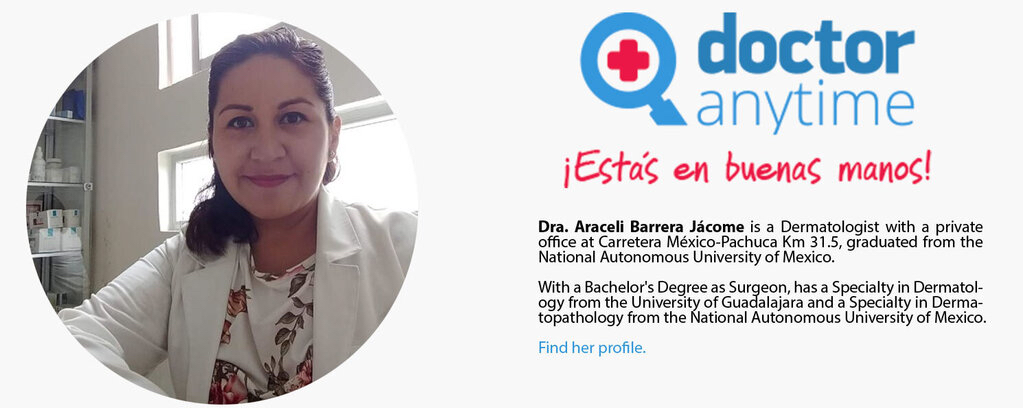Photoprotection consists of the measures taken to reduce the harmful effects of chronic sun exposure, such as: aging and skin cancer. One of the main objectives is to reduce the number of cases of skin cancer and therefore their mortality.
Exposure to ultraviolet radiation is a risk factor for skin cancer
Some studies indicate that exposure to ultraviolet (UV) radiation and the sensitivity of the skin to this type of radiation are risk factors for skin cancer. UV radiation is the name of the invisible rays that are part of the energy emitted by the sun. Sunlamps and tanning beds also emit UV radiation.
The risk factors for non-melanoma and melanoma cancers are not the same.
- Risk factors for non-melanoma skin cancer:
- Exposing yourself to natural or artificial sunlight such as tanning beds for a long time.
- Have a fair complexion, as in the following examples:
- Fair skin that freckles and burns easily, does not tan or tans poorly.
- Blue, green or light eyes.
- Red or blond hair.
- Present actinic keratosis.
- Have received radiation treatment.
- Have a weakened immune system.
- Being exposed to arsenic.
- Risk factors for melanoma skin cancer:
- Have a fair complexion, as in the following examples:
- Fair skin that freckles and burns easily, does not tan or tans poorly.
- Blue, green or light eyes.
- Red or blond hair.
- Exposing yourself to natural or artificial sunlight such as tanning beds for a long time.
- Having a history of many sunburn blisters, especially during childhood or adolescence.
- Having several large moles or many small moles.
- Having a family history of abnormal moles (atypical nevus syndrome).
- Having a personal or family history of melanoma.
Although having a fair complexion is a risk factor for melanoma and non-melanoma skin cancer, skin cancer occurs in people of all skin types.
Using sunscreen and avoiding sun exposure
Sunscreen helps decrease the amount of UV radiation that reaches the skin. In one study it was found that the use of sunscreen can help prevent actinic keratosis, which consists of scaly patches on the skin that sometimes develop into squamous cell carcinoma.
The harms of using sunscreen are likely to be small and include allergic reactions to skin creams and lower concentrations of the vitamin D made by skin from less sun exposure.
It is also possible that when a person uses sunscreen to prevent sunburn, they spend too much time in the sun and are exposed to harmful UV radiation.
Experts advise the following:
- Use sunscreen against UV radiation on a daily basis and renew its application every 4 hours to maintain its effect and every two hours in case of being on the beach or the pool. Such protection is necessary even on cloudy days and even if exposure to the sun is not direct, for example when traveling by car.
- Stay out of the sun for long periods of time, especially when it is at its strongest, between 11 am to 4 pm.
- Wear long-sleeved shirts, long pants, sun hats, and sunglasses when outdoors.
- In case of the appearance of new moles or if changes in color, shape or appearance of discomfort are detected in an already known mole, it is advisable to visit your dermatologist for a review. The rest of the moles that remain unchanged, can be reviewed annually by the dermatologist to detect suspicious skin cancer lesions.
There is a variant of melanoma, called acral lentiginous melanoma, which has a high prevalence in our Mexican population. This variant is located mainly on the feet, so there is an extra recommendation for our population, which consists of checking the soles, nail edges and toe folds to detect lesions suspicious of melanoma.
Thanks to Dr. Araceli Barrera Jácome, dermatologist, for sharing the information and writing this article. She graduated from the National Autonomous University of Mexico with a Bachelor’s Degree as Surgeon, she has a Specialty in Dermatology from the University of Guadalajara and a Specialty in Dermatopathology from the National Autonomous University of Mexico.
References:
- PDQ Prevention of skin cancer. Bethesda, MD: National Cancer Institute.
- Confronting melanoma in the 21st century. Gutiérrez, RM and Cortés, N. 2007, Med Cutan Iber Lat Am, Vol. 35, pp. 3-13.




